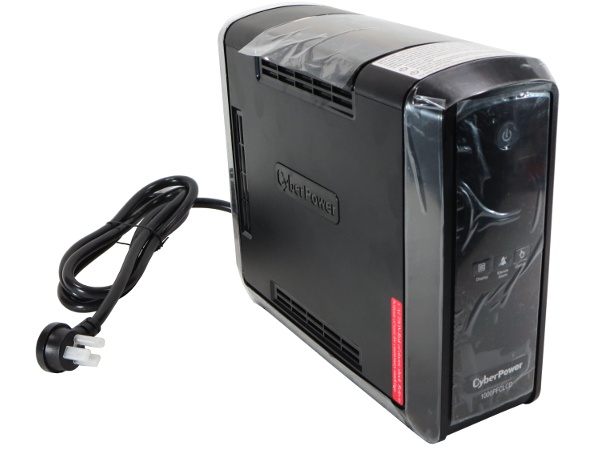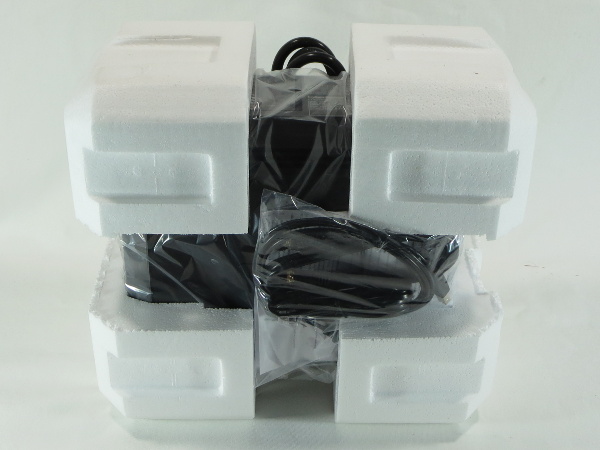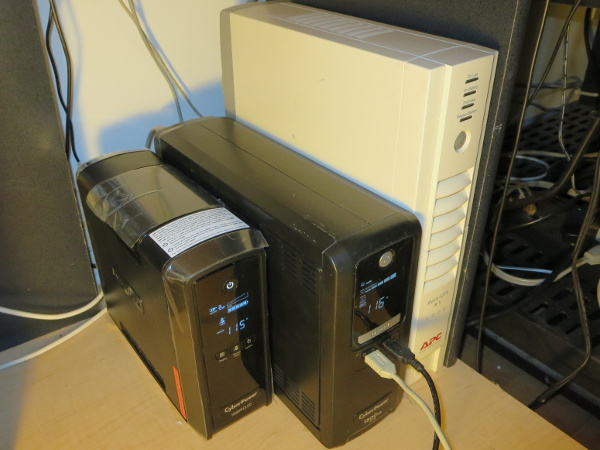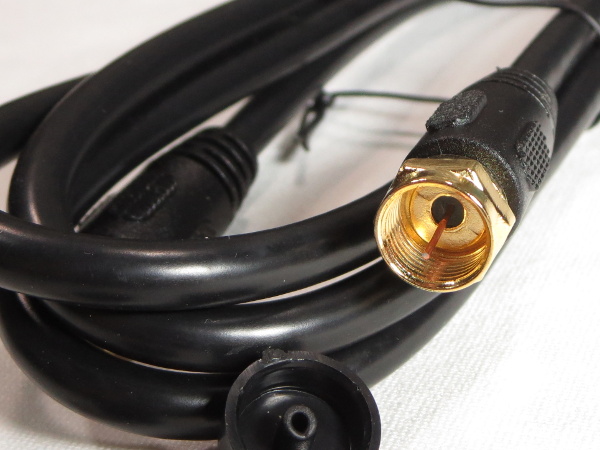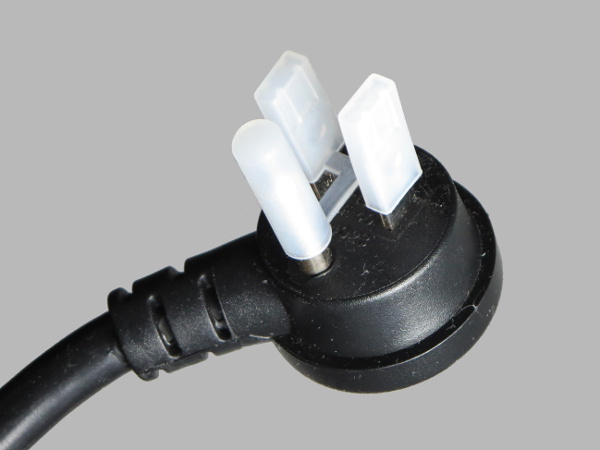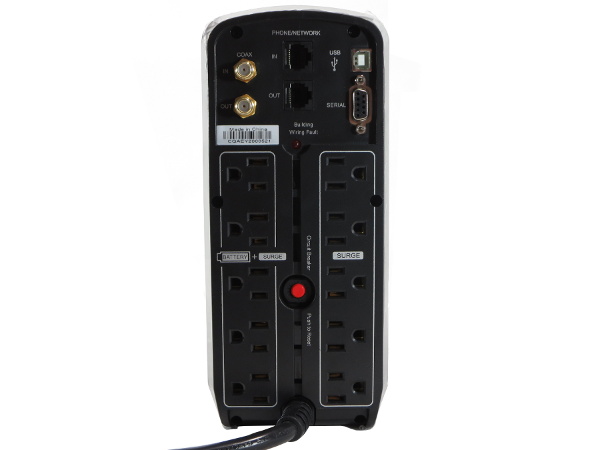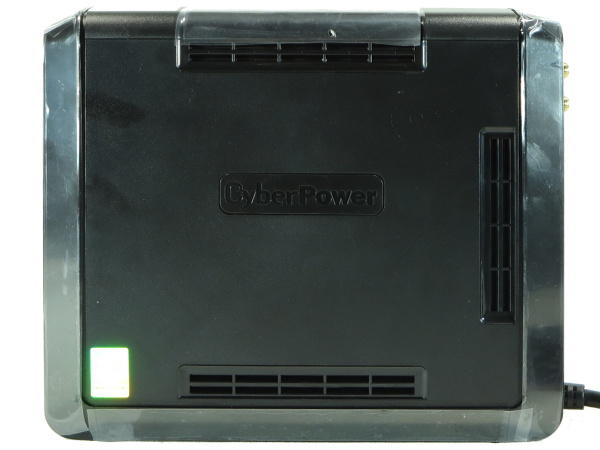CyberPower CP1000PFCLCD Tear-Down
Today's Victim: CP1000PFCLCD
In several of my previous power-related tear-downs, many readers commented that they wanted to see what goes on inside one of those “Pure Sinewave” battery backup systems, and I finally got around to picking up a CyberPower CP1000AVRLCD on sale from NCIX for $150 CAN. Will it leave a better impression than Tripp-Lite’s disappointing SMART1000? There is only one way to find out: dig in.
MORE: APC BE550G Tear-Down
MORE: Tripp-Lite SMART1000LCD Tear-Down
MORE: CyberPower LX1500GU-FC UPS Tear-Down
Brown Box
Given a somewhat more business-oriented approach, CyberPower doesn't waste as much money plastering full-color glossy marketing material all over its packaging. Humble black ink on unbleached corrugated cardboard gets the job done.
The printed claims are what we'd expect from a modern mid-range consumer-grade UPS, except for that first point about offering protection specifically for computers equipped with active power factor correction circuitry, which typically implies some form of more sinusoidal output.
Packaging
Inside the box, the UPS is surrounded by a second layer of corrugated cardboard and Styrofoam blocks up to four centimeters (about 1.5”) thick on the sides, protecting each corner. I do not know about you, but I personally find it funny when more than half of a product box’s internal volume is air and shipping protection. Of course, better safe than sorry.
Sizing Up
As usual, my old BX1000 towers over everything else. Compared to the LX1500 in the middle, the 1000PFCLCD is only one centimeter shorter and eight centimeters shallower. Can you guess what component is mostly responsible for the PFCLCD’s smaller size? Let me give you a hint: it is also about three kilos (seven pounds) lighter.
Paperware
The 1000PFCLCD comes with the usual paper assortment: a single-sheet manual, a quick-start guide and a registration card. Surprisingly enough, the accessories bag also contains a software installation disc. While that's nice, it's also usually futile since the shipped version is rarely current. Most people will simply download the latest version instead.
Get Tom's Hardware's best news and in-depth reviews, straight to your inbox.
Accessories
We have a full complement of cables here: telephone, coax and USB. How often do you see coax cables shipped with plastic caps to protect the central conductor from bending during shipping? In a properly-made coax cable, that conductor should be cut flush with the connector’s opening and not really require any sort of protection other than the connector nut.
Fancy Coax?
No, there's nothing fancy here. For a moment, I thought that the caps may have been to protect higher-quality cable terminations. But the dielectric that should have been cut flush was instead cut one or two millimeters short of providing uninterrupted coverage in the transition from the coaxial cable to the F-connector it plugs into. This transition from coax dielectric to air to F-connector dielectric will cause unnecessary signal reflections and degradation.
With that said, I have seen many coaxial cables that looked worse. Even the cable bundled with Monster’s HT-800G was of questionable build quality.
Starting From The Wall
In my LX1500 tear-down, I commented that the plug would have been better if it had simply been round. Here, it looks like some people at CyberPower came to the same conclusion and picked a stepped round plug design for the CP1000PFCLCD. But the cord is exiting the “wrong way” to maximize the distance between whichever finger you put on the right side of the plug and the live prong. At least the round design yields a better grip from many different angles, and the grip ridge is rather far from the prongs themselves, which should help reduce the risk of unpleasant surprises.
The Copper Standard
After the handful of 1000VA or smaller systems I have seen with #16 gauge power cords, I doubted I would see another 1000VA UPS with a proper #14 gauge cord again. But here it is: 3x2.08mm.
As a side note, all of the information I could find about UL standard 1363 (relocatable power taps) points towards devices with more than three outlets being considered as branch circuit extensions and should have cords with #14 gauge conductors or thicker. Similarly, what I could find on UL 1778 (UPS) only mentions wire gauges thinner than #14 for control circuits, not power conductors. Have the standards been lowered since their 1997-2001 revisions? The proliferation of #16 cords seems to point that way.
The Back End
What is there to see here? Two sets of five tightly spaced outlets that are going to be a nightmare if you want to plug wall warts in, a breaker just above the cord’s entry point, the two coax F-connectors and two RJ45 for what are likely the same sort of surge protection seen in the LX1500, a wiring fault indicator LED, a USB port for computer-based monitoring and configuration, and a good old DB9 serial port mainly for use with legacy equipment that relies on RS-232.
RS-232 may be old, but it is hard to beat the ease of integration: there is no multi-layered hardware and software protocol stack to worry about, unlike USB. This is even more true when the UPS also exposes basic status and control (such as on-battery, low battery and shutdown) over RS-232 status and control lines.
Side Panel
CyberPower is proud of its glossy plastic, covering most of it with clear plastic to prevent scratches during shipping. Both sides feature CyberPower’s logo and a modest number of cooling vents at the top, bottom and rear. On the bottom-left corner of the right panel, you can also see the “Energy-Saving Technology” sticker, although its color-shifting inks swamped my camera’s sensor in this shot.
While I may like the look of black peripherals and PC cases in general, one disadvantage is that most black finishes rarely look clean for very long. You can see a rather clear hand print from one of the times I grabbed the unit to move it across my work bench on the front (left). Dust is also highly visible on glossy black.
MORE: APC BE550G Tear-Down
MORE: Tripp-Lite SMART1000LCD Tear-Down
MORE: CyberPower LX1500GU-FC UPS Tear-Down
-
KaiserPhantasma inally =D but will these get a "ok to buy" from you or are there other models/brands we can look at?Reply
also well written nice job on the article -
Daniel Sauvageau Aside from Tripp-Lite which gets a definitive fail for lacking a breaker and wasting twice as much power as almost any other UPS I have taken apart here, they are all "worth looking at" if they suit your specific application.Reply
I'm using the LX1500 for my main PC (not using the coax nor Ethernet protections), I installed the BE550 at my mother's place as planned and I'm currently using the 1000PFCLCD as a portable/isolated AC source.
None of them are perfect but they are all usable. There is that nagging feeling from seeing third or fourth tier caps peppered throughout most of them. Higher quality caps appear to have gone extinct in UPS under ~$160. At least those I have gotten my hands on so far. -
cage0022 I enjoy your reviews, but this was so technical, I'm not even sure if this is a positive review or not. So are you saying it doesn't really do sine wave and if buying for that factor, it's a waste of money?Reply
Lastly, what would you recommend for someone who wants a good sinewave UPS that also offers good surge protection, without breaking the bank? (or, what's the most affordable way to get a good surge protector and battery backup unit?) -
Daniel Sauvageau Reply
It is a tear down, I show you what is inside, comment on some of the things I have seen and readers can decide if what they have seen is worth whatever the unit or an equivalent one might be worth to them. The PFCLCD did produce a (mostly) sinusoidal output but on my unit, the output voltage under no-load condition was intermittently extremely low the first few times I checked. An UPS would not normally run under no-load condition, so that shouldn't be an issue during normal use.18256861 said:I enjoy your reviews, but this was so technical, I'm not even sure if this is a positive review or not.
Where surge protection in UPSes is concerned, none of those I have looked at here so far have anything beyond basic three MOVs surge protection on the power side, the same protection found in the same brands' $10-15 power strips. If you want more thorough power line surge protection, you will need to disregard the UPS and surge protector instructions and use something else with more serious surge protection (isobar, SurgeArrest Performance, SurgeX/Zerosurge, etc.) upstream from the UPS.
-
falchard Actually for a Coax cable you want the dielectric just a bit past the fitting's edge. Depending on how cheap the fitting is, it may need to be a little longer. Still that coax cable is junk and running a coax through the UPS will probably ruin a digital signal. Better to ground out a coax cable at the MPOE instead of through a surge protector.Reply -
cage0022 Reply18258292 said:18256861 said:I enjoy your reviews, but this was so technical, I'm not even sure if this is a positive review or not.
If you want more thorough power line surge protection, you will need to disregard the UPS and surge protector instructions and use something else with more serious surge protection (isobar, SurgeArrest Performance, SurgeX/Zerosurge, etc.) upstream from the UPS.
Thank you for the clarification on the sinewave issue. Where you state, "disregard the UPS and surge protector instructions and use something else with more serious surge protection (isobar, SurgeArrest Performance, SurgeX/Zerosurge, etc.) upstream from the UPS", is that safe to do? I thought I'd read somewhere that you shouldn't plug a UPS into a surge protector (or vise versa). If so, that's what's lead to my quandary - if you shouldn't plug a UPS into a surge protector, then how does when get surge and battery backup?
Also, thank you for the teardowns - although I may not understand the technical side, it's still a great read and good to see someone separating the marketing from the truth.
-
Daniel Sauvageau Reply
Indications against it are stuck on labels, printed or molded into just about every UPS and power strip I have taken apart here. There are two reasons I can think of: not overloading the power bar (which you shouldn't be able to do on a good bar with #14 cord and a 15A breaker in the first place) and poor/intermittent ground connections on those cheap bars or UPS that use simple flaps for the ground connections like the BE550 from last month.18259735 said:is that safe to do? I thought I'd read somewhere that you shouldn't plug a UPS into a surge protector (or vise versa).
Of those two issues, I'd say poor ground is the one that bothers me the most as those square-bent flap-style ground connections are still common despite the more reliable torque contact style (I call them 'torque' because the contact fingers attach to the sides of the metal strips which act as torque bars and reduce strain at bend lines) costing practically the same to manufacture: one slightly more complex cutting die, one slightly more complex bending/shaping die, same amount of metal. (Though based on the level of inconsistency in how flaps get bent, I would not be surprised if they got 'shaped' by poking blunt nails in assembled units instead of a die.)
Every extra cord and junction box between the breaker box and your loads is one more potential point of failure and extra power losses. There is nothing fundamentally wrong with combining devices within reason but manufacturers don't want to take the blame if people exaggerate and something goes wrong.
I believe the only power bar I have seen that lacked such instructions is the SurgeX's SA-1810. That thing is built like a tank, which does not leave much for the company to worry about. I would expect no less from a $200+ surge protector and its instructions even suggest protecting UPSes as one application. -
gamebrigada I would love to see you tear down some "Enterprise" grade UPS's. Some that have some serious reliability and where name brands are paid extra for. I would do one myself out of curiosity but I doubt my opinion would be regarded well.Reply -
jeyman Dan,Reply
I wanted to say that your review is very thorough and well put together. I gained a lot of insight about the Cyberpower units and how they are built (as well as their shortcomings). Thank you for that.
A few things to consider though. Your writing style sometimes comes across as overly sarcastic and you make a presumption that the reader has already gone through your previous articles, leaving off key details or making inferences. Additionally, your readers could benefit from a well formed summary or conclusion as we do not all possess the skill sets that you do. With your attention to detail and obvious subject knowledge, I think your articles could be made even better with a little more time and care.
I look forward to seeing many more of your articles and will make a point to check out your previous postings.
Thanks again for the good read.
